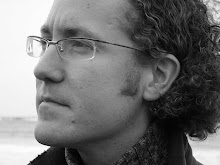The technology available for recording the direction of a person’s gaze has taken massive leaps forward in the last few years. The cost, precision, usability, and, most importantly discomfort of using an eye tracker has now reached a level where any psychology research lab or usability/HCI assessment centre can use eye tracking. Recording the focus of a person’s overt attention (as well as other measures such as pupil dilation, blink rate and eyelid closure) can provide a real-time measure of their experience and an indication of their cognitive processes. Such an insight can complement existing methodologies and allow researchers to understand the dynamics of human experience.
At the recent Experimental Psychology Society conference held here in Edinburgh, eye tracking was clearly rising in popularity as many different researchers applied it to areas such as reading studies, lexical processing of speech, facial expression recognition, social attention, object perception, working memory, visual search, scene perception, and, of course, attention research. The current popularity of eye tracking can be directly related to the increases in technology. Most of the researchers currently using eye tracking are not, primarily attention researchers. The tools provided by the eye trackers allow them to use eye movements as an index of other phenomenon such as real-time cognitive processes. Previously, a research lab would be required to build their own display and analysis tools from scratch (using programming environments such as C or Matlab). This placed eye tracking research clearly out of reach for most people and required a considerable understanding of basic oculomotor control and attention. I believe the current renaissance of eye tracking (of which
One big obstruction to the advancement of eyetracking in to other areas of psychology is its current incompatibility with dynamic scenes. Many areas of psychology are interested in understanding human behaviour in realistic settings such as social interactions, conversations in the real-world, moving through the world, performing actions, complex tasks such as driving, and even watching TV (or is that just me :). As anybody who has ever tried to record eye movements in one of these settings will know, it is phenomenally complicated and time consuming. For example, Mike Land’s influential research on goal-oriented attention during tea making required the construction of novel eye movement technology and the hand coding of every frame of the resulting video! It is no wonder that eye tracking of dynamic scenes is so uncommon when the analysis is so laborious.
The situation has recently got a lot better with the introduction of new eye tracking software. The Tobii and Eyelink (SR Research) eye tracking systems now come with software for displaying dynamic scenes (e.g. videos, animations, etc). However, being able to display the videos is pointless if there is no easy way to analyse the resulting data. No systems, that I am currently aware of assist in the analysis of eye movements in dynamic scenes.
This lack of support for eye movement researchers interested in using dynamic stimuli has motivated me to make a call-to-arms. I know of a growing number of researchers, both in academia and industry who are struggling with the problems, both practical and theoretical associated with recording eye movements in dynamic scenes. No support structure exists for these researchers, no common source of knowledge or tools, and no where they can go to ask for help. Because of this I’ve decided to put out a call to all researchers using or interested in performing eyetracking in dynamic scenes. The Eyetracking and Dynamic Scenes [EDS] Interest Group will comprise a mailing list to which members can post information relating to their research, ask for help, and post useful resources (e.g. software) and references.
If you are interested in signing up for the Eyetracking and Dynamic Scenes [EDS] mailing list, please e-mail me at tim.smith [at] ed.ac.uk with the subject “[EDS] registration” and include the following content in the body of your e-mail:
Name
Position e.g. Research Fellow
Affiliation e.g. name of University or business
Location
Short summary of your research interests.
Existing eye tracking equipment you use.
Together we can make the experience of researching eye movements in dynamic scenes pleasurable, practical, and painless.




No comments:
Post a Comment